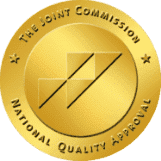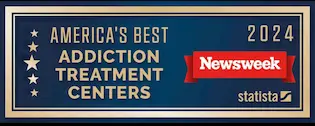Sentencing Alternatives: Treatment vs Incarceration for Drug Offenders
Sentencing Alternatives: Treatment vs Incarceration for Drug Offenders
Over the last nearly 50 years, an overwhelming amount of evidence has shown that the United States’ “war on drugs” has been an abject failure when compared to sentencing alternatives.
Incarceration rates for drug offenses remain constant as law enforcement, much like the fabled Dutch Boy plugging leaks in the dam with his finger, finds it impossible to stop the flow of illicit substances into communities around the country.
There is another, far more effective option – sentencing alternatives like addiction treatment and mental health diversion for drug offenders instead of incarceration.
 It’s a widely understood fact that addiction is a medical illness and a public health issue, according to government agencies like the National Institutes of Health.
But rather than address this chronic disease, people are sentenced to lengthy prison stays where there are little to no resources for helping them recover from this treatable condition.
Not only is this system ineffective for people suffering from addiction who deserve compassion, but it also costs the nation trillions of dollars.
It’s a widely understood fact that addiction is a medical illness and a public health issue, according to government agencies like the National Institutes of Health.
But rather than address this chronic disease, people are sentenced to lengthy prison stays where there are little to no resources for helping them recover from this treatable condition.
Not only is this system ineffective for people suffering from addiction who deserve compassion, but it also costs the nation trillions of dollars.

 Seattle, Washington, has also embraced alternative sentencing programs. Hit hard by the opioid epidemic, local officials created the Law Enforcement Assisted Diversion (LEAD) program.
Instead of officers being forced to make low-level drug offense arrests, LEAD provided individuals with the opportunity for social services, including addiction treatment.
City law enforcement found that 58 percent of individuals diverted to the alternative sentencing programs did not re-offend compared to those arrested who did not receive alternative sentencing.
There are dozens of other examples of success with alternative sentencing programs, but one report by the Justice Policy Institute sums up the benefit of this approach.
“Treatment delivered in the community is one of the most cost-effective ways to prevent [drug-related] crimes and costs approximately $20,000 less than incarceration per person per year.
…Releasing people to supervision and making treatment accessible is an effective way of reducing problematic drug use, reducing crime associated with drug use and reducing the number of people in prison,” write the authors.
Seattle, Washington, has also embraced alternative sentencing programs. Hit hard by the opioid epidemic, local officials created the Law Enforcement Assisted Diversion (LEAD) program.
Instead of officers being forced to make low-level drug offense arrests, LEAD provided individuals with the opportunity for social services, including addiction treatment.
City law enforcement found that 58 percent of individuals diverted to the alternative sentencing programs did not re-offend compared to those arrested who did not receive alternative sentencing.
There are dozens of other examples of success with alternative sentencing programs, but one report by the Justice Policy Institute sums up the benefit of this approach.
“Treatment delivered in the community is one of the most cost-effective ways to prevent [drug-related] crimes and costs approximately $20,000 less than incarceration per person per year.
…Releasing people to supervision and making treatment accessible is an effective way of reducing problematic drug use, reducing crime associated with drug use and reducing the number of people in prison,” write the authors.
 It’s a widely understood fact that addiction is a medical illness and a public health issue, according to government agencies like the National Institutes of Health.
But rather than address this chronic disease, people are sentenced to lengthy prison stays where there are little to no resources for helping them recover from this treatable condition.
Not only is this system ineffective for people suffering from addiction who deserve compassion, but it also costs the nation trillions of dollars.
It’s a widely understood fact that addiction is a medical illness and a public health issue, according to government agencies like the National Institutes of Health.
But rather than address this chronic disease, people are sentenced to lengthy prison stays where there are little to no resources for helping them recover from this treatable condition.
Not only is this system ineffective for people suffering from addiction who deserve compassion, but it also costs the nation trillions of dollars.
The data on sentencing alternatives is staggering and includes the following:
- The U.S. government spent an estimated $9.2 million daily in 2015 to imprison people charged with drug-related offenses, totaling more than $3.3 billion every year. State governments spent another $7 billion that same year.
- Of the approximately 456,000 individuals in prison, one-fifth have been incarcerated for drug-related crimes. An additional 1.15 million are on parole or probation for the same reason.
- Research shows that incarceration has little effect on reducing substance abuse rates, and actually makes the situation worse. The leading cause of death among recently released individuals is, in fact, drug overdose. The risk of overdose among those recently released from prison is 129 percent higher than those in the general population.
- A report by the U.S. Department of Justice suggests that two-thirds of inmates charged with drug offenses will return to prison within three years of being released. About half of them return for simply failing a drug test.
- Lower crime rates
- Safer communities
- Better employment numbers
- Saved millions and millions of dollars in the process

Sentencing Alternatives – Programs For Drug Offenders
Several states coping with overcrowded prisons and extremely high recidivism rates, some as a result of the opioid epidemic, have taken steps to move away from the “zero tolerance” drug policies and substitute them with a more compassionate, science-based approach like sentencing alternatives. Alternative Sentencing Programs operate on the evidence-based practice that addiction treatment is far more effective than sentencing drug offenders to prison where there is a serious lack of mental health care. For many offenders in alternative sentencing programs, it is their first opportunity to receive medically supervised rehabilitation treatment that addresses the disease of addiction and increases the likelihood of recovery. In most cases, these programs are only eligible for low-level, nonviolent drug offenders with no previous criminal record. In order to qualify, they must: 1. Receive an evaluation 2. Demonstrate a willingness to change 3. Undergo a drug or alcohol addiction treatment program As the success of these programs continues to grow, experts and health care professionals are hopeful that the requirements for an alternative sentence may be expanded to those with a longer record of nonviolent drug offenses, those imprisoned because of a lifetime struggle with addiction.Addiction Treatment vs. Jail – Mental Health Diversion
California is one of the states pushing the boundaries on Alternative Sentencing and Mental Health Diversion Programs. In 2000, the state established “collaborative justice courts,” including specialized drug courts and mental health courts with the goal of problem solving before prison sentences. California also has a mental health diversion law that authorizes courts to allow offenders to receive treatment in lieu of jail or prison time. If an individual completes treatment, the charges are dismissed. These efforts have paid off for the state of California. Though it was an expensive challenge for California to establish these alternative sentencing programs, officials estimate that the state will save around $150 million in the coming years, but there has already been substantial headway made on the issue of recidivism.California Alternative Sentencing Programs witnessed the following statistics:
- Incarceration rates dropped by 85 percent
- Convictions were reduced by 77 percent
- Arrests among participants that completed treatment fell by another 85 percent
 Seattle, Washington, has also embraced alternative sentencing programs. Hit hard by the opioid epidemic, local officials created the Law Enforcement Assisted Diversion (LEAD) program.
Instead of officers being forced to make low-level drug offense arrests, LEAD provided individuals with the opportunity for social services, including addiction treatment.
City law enforcement found that 58 percent of individuals diverted to the alternative sentencing programs did not re-offend compared to those arrested who did not receive alternative sentencing.
There are dozens of other examples of success with alternative sentencing programs, but one report by the Justice Policy Institute sums up the benefit of this approach.
“Treatment delivered in the community is one of the most cost-effective ways to prevent [drug-related] crimes and costs approximately $20,000 less than incarceration per person per year.
…Releasing people to supervision and making treatment accessible is an effective way of reducing problematic drug use, reducing crime associated with drug use and reducing the number of people in prison,” write the authors.
Seattle, Washington, has also embraced alternative sentencing programs. Hit hard by the opioid epidemic, local officials created the Law Enforcement Assisted Diversion (LEAD) program.
Instead of officers being forced to make low-level drug offense arrests, LEAD provided individuals with the opportunity for social services, including addiction treatment.
City law enforcement found that 58 percent of individuals diverted to the alternative sentencing programs did not re-offend compared to those arrested who did not receive alternative sentencing.
There are dozens of other examples of success with alternative sentencing programs, but one report by the Justice Policy Institute sums up the benefit of this approach.
“Treatment delivered in the community is one of the most cost-effective ways to prevent [drug-related] crimes and costs approximately $20,000 less than incarceration per person per year.
…Releasing people to supervision and making treatment accessible is an effective way of reducing problematic drug use, reducing crime associated with drug use and reducing the number of people in prison,” write the authors.




